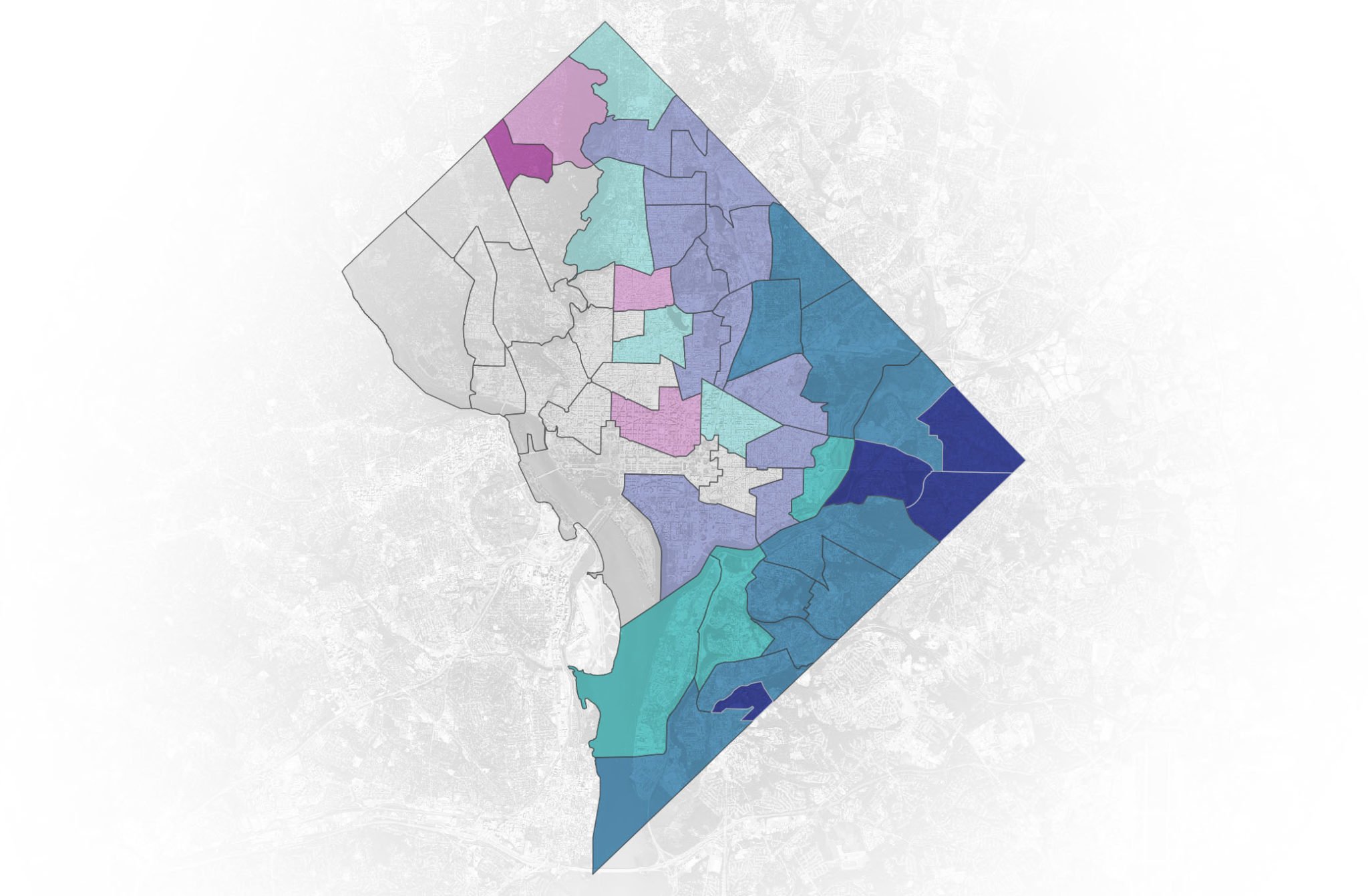Though clean air laws have seriously improved DC’s air quality, the health benefits have not been experienced equally among the city’s residents. A new report from NASA’s Earth Observatory includes a map that shows the locations in the District with the highest levels of fine particle pollution. They largely intersect with neighborhoods whose residents are predominantly people of color.
According to the map, the majority of the northeast, southeast, and southwestern quadrants had both the highest rates of air pollution mortality and the largest populations of Black residents.
The research found that the rates of COPD, lung cancer, and strokes—which can all be connected to air quality—are five times higher in Southeast compared to Northwest, and asthma-caused emergency room trips are 30 times higher.
However, it’s important to note that air pollution isn’t the only reason for these health disparities. Things like smoking, chronic stress, and poor access to health care and nutritional food also “likely play a role,” according to the report.
“There isn’t a one-to-one relationship between polluted air and poor health outcomes,” Maria Castillo, a research associate at George Washington University, says in the report. “But there is a large and growing body of evidence that makes clear that air pollution hits disadvantaged communities harder because people in these communities are more likely to breathe polluted air and because baseline health disparities make exposure to pollution especially harmful.”
The study was conducted using the five ground-based air quality monitors in the city and several NASA satellites. Overall, the levels of fine particle pollution have declined in DC by roughly 50% since 2000, and the number of residents who died from diseases related to air pollution also declined by 50% in the same period.



















